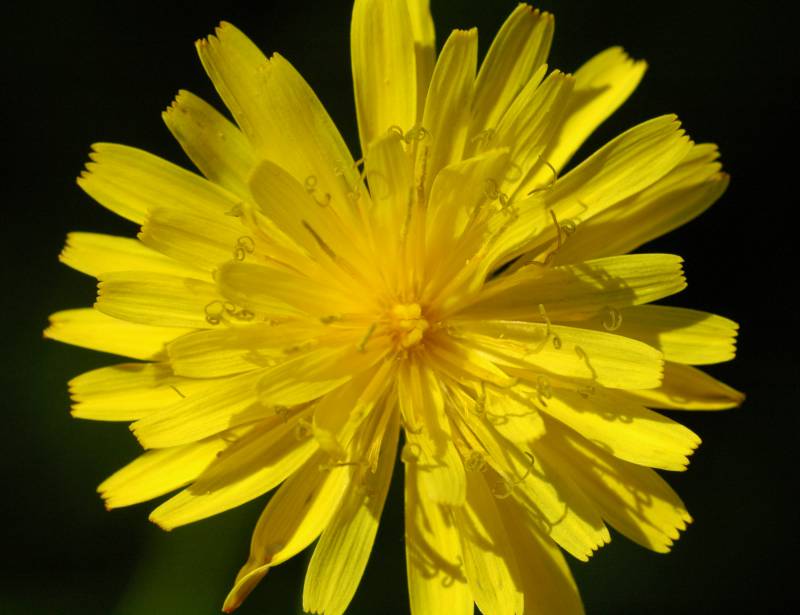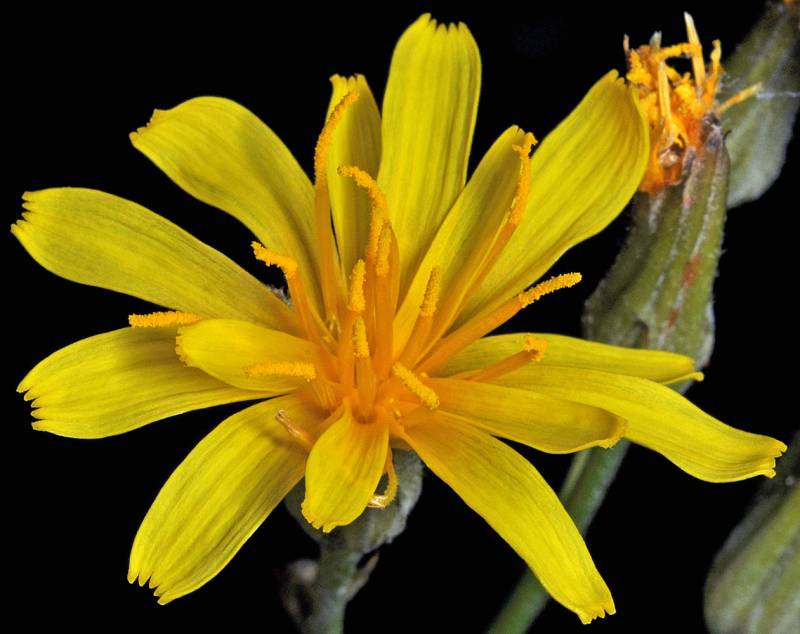Crepis capillaris
Crepis intermedia
smooth hawksbeard
gray hawksbeard, intermediate hawksbeard, limestone hawksbeard
Basal leaves petiolate, the blade lanceolate to oblanceolate, with fine teeth to pinnatifid, 3-30 cm. long and 5-45 mm. wide;
cauline leaves reduced upward, becoming sessile, narrowly lanceolate, clasping and auriculate.
Basal and lower cauline leaves 1-4 dm. long, pinnatifid, with entire or dentate lobes; other leaves few and reduced.
Heads several or numerous, 20-60 flowered;
involucre 5-8 mm. high, its inner bracts 8-16, white-woolly and often glandular-bristly with black hairs, becoming spongy-thickened on the back; outer bracts linear, less than half as long as the inner.
Heads 10-60, 7-12 flowered;
involucre 10-16 mm. high, finely grey-woolly, outer bracts less than half as long as the 7-8 inner ones;
corollas all ligulate, yellow, 14-30 mm. long.
Achenes tawny, 1.5-2.5 mm. long, tapered at both ends.
Achenes yellow or brownish, narrowed above.
Crepis capillaris
Crepis intermedia
- Local floras:
BC,
CA,
OR,
WA
- Local Web sites:
CalFlora,
CalPhotos,
Flora NW,
PNW Herbaria,
Turner Photog.
WildflowerSearch
iNaturalist (observations)
USDA Plants Database
- LBJ Wildflower Center
- SEINet
- Plants of the World Online
- Encyclopedia of Life
- Wikipedia
- Google Image Search
- Local floras:
BC,
CA,
OR,
WA
- Local Web sites:
CalFlora,
CalPhotos,
Flora NW,
PNW Herbaria
WildflowerSearch
iNaturalist (observations)
USDA Plants Database
- LBJ Wildflower Center
- SEINet
- Plants of the World Online
- Encyclopedia of Life
- Wikipedia
- Google Image Search



